Gardening Tasks To Do in October
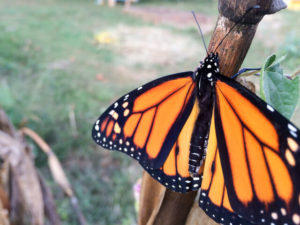 We’ve stopped stop eating breakfast outside. After a summer of eating almost every meal outdoors, mornings are a little too cool for pajamas and bare feet.
We’ve stopped stop eating breakfast outside. After a summer of eating almost every meal outdoors, mornings are a little too cool for pajamas and bare feet.
But once we put on jackets and shoes, these cool October days feel perfect for working and playing in the garden. Nature is getting ready for winter as monarchs migrate, plants set seed, leaves change colors, and squirrels bank acorns. This month’s garden to-do list includes our own prep for winter, along with some fall fun.
Here are garden tasks you may want to add to your list for fall.
Who Is This For?
Our garden checklist is for gardeners interested in growing food and healthy ecosystems. We use organic methods, get the whole family involved, and look for ways to mimic nature using permaculture ideas.
We live in the Northern Hemisphere in USDA Zone 7. These recommendations can be applied to many gardens in Zone 6-8. (Not sure what your zone is? Find your USDA zone here. Not in the U.S.? This pdf comparing international zone systems may help.)
Quick 3 for Busy Gardeners
If you have really limited time for gardening (and reading!), I recommend you focus on these three areas this month:
- Start a big batch of compost.
October is a fantastic month to collect materials for a big batch of compost. (Join our Quick Start to Composting class if you want help getting started!) You can also stockpile some fall leaves, corn stalks, and other “brown” material to use in composting your kitchen waste all year round. - Plant bulbs, including garlic.
Spring-blooming bulbs and garlic should be planted 4-6 weeks before a hard freeze. If the trees are changing colors, it’s about the right time. I love having garlic and bulbs in the garden because of the cheerful green they bring to the earliest spring days. Just when you’re wondering if winter will ever end, the garlic is up! (If you live in warm climate, you might need to refrigerate your bulbs before planting to trick them into thinking they’ve been through winter. Check with your local extension office for details.) - Visit a pumpkin patch or orchard.
Enoy an outing with your family and get inspiration for what you might want to grow next season at a local farm or public garden. 🙂
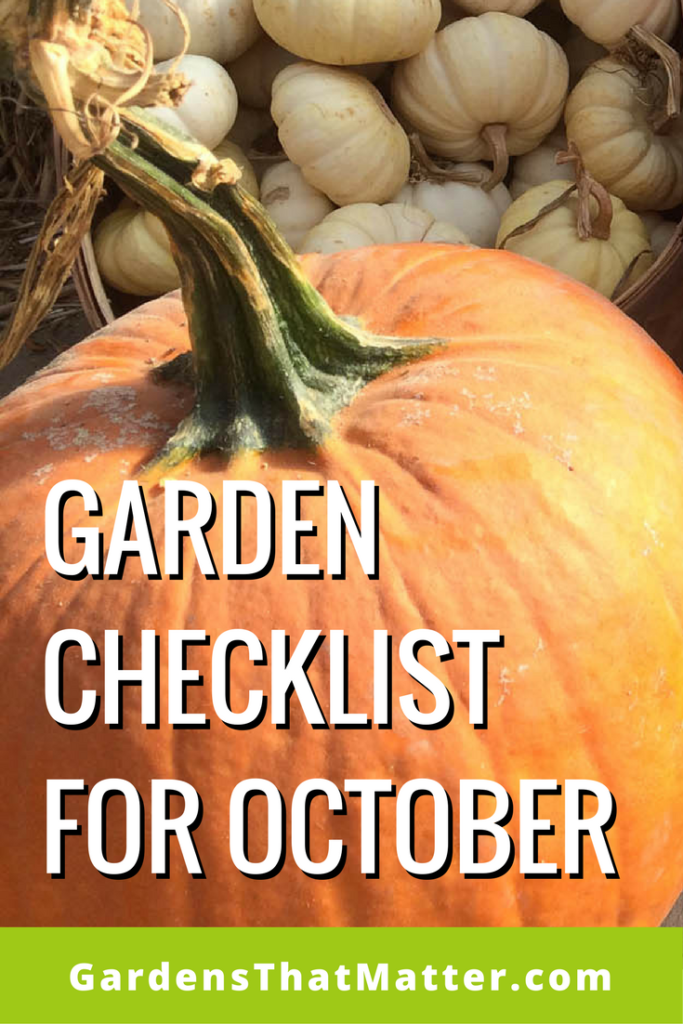
October Garden Checklist
Plants
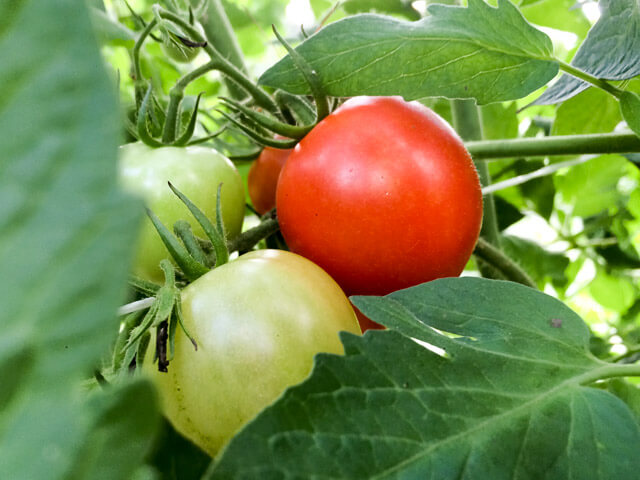
Harvest even the green ones before frost arrives.
- Give tomatoes an extra week or two.
If your winter weather starts with light frosts, you can protect tomatoes and other tender plants by covering them with a sheet of plastic or light blanket. Before you get a heavy frost, harvest the rest of the tomatoes, even the green ones. We arrange greenies in a single layer on newspaper and cardboard down in our basement, and we eat them as they ripen. Some years, we eat garden “fresh” tomatoes at Thanksgiving! - Bring in the last harvest from your summer garden.
Pumpkins, winter squash, and other tender vegetables need to come inside before freezing weather arrives. Clip the last basil and other tender herbs to dry or freeze. - Enjoy some frost-sweetened greens.
After frost, your hardy greens like collards and kale will have an extra sweetness. To protect their tissues from freezing, the greens convert starches to sugars. (Sugars freeze at a lower temperature.) Cook up a big pot this month! - Collect seeds to save.
If your plants are open-pollinated varieties, you can likely collect, dry, and store seed for next year. Look for local wildflower seeds to add to your collection, too.
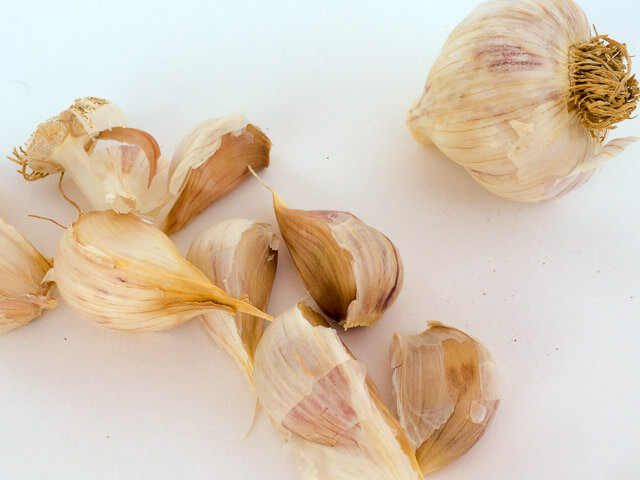
Chesnook Red, a hardneck variety, ready for planting.
- Plant garlic!
Choose the largest cloves and plant them about 2 inches deep with the pointy end up. - Add a cover crop.
You can still sow a winter cover crop like cereal rye or winter wheat. Some will sprout before winter; the rest will start growing in early spring. Cover crops can lessen erosion, increase soil life, and give you green manure or mulch in spring.
- Bring houseplants inside.
Most houseplants are tropical varieties, so they need to come inside as soon as temperatures start to dip. Give them a dressing of fresh compost and a good soaking before you bring them inside. If they need to be repotted or divided, now is a good time to do it!
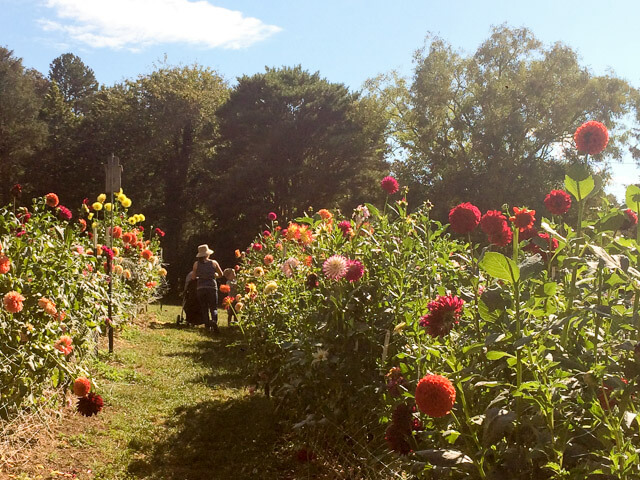
Dahlias at Bullington Gardens
- Dig up tender bulbs to store indoors.
I remember watching my mom dig up dahlias each fall after the killing frost and then replant them again in spring. Canna lilies, elephant ears, and other tender bulbs need this extra attention. I haven’t grown my own dahlias yet, but the fantastic displays at a local botanic garden have me inspired. - Tuck in empty garden beds.
Clean up annual growing areas and cover them with a thick layer of mulch to protect the soil over winter. As a bonus, the organic material will break down and add nutrients to your garden.
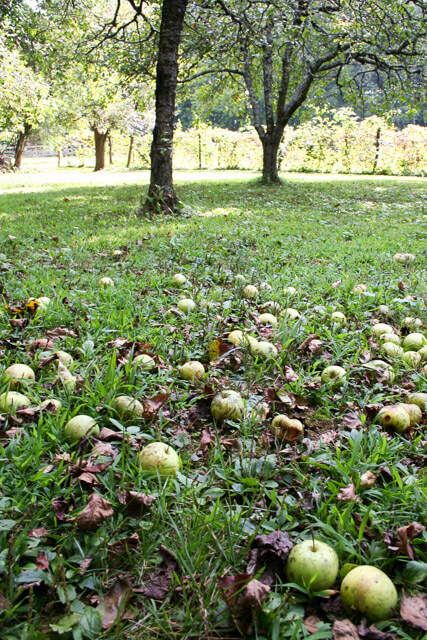
The chickens will help us clean up fallen apples later this month.
- Clean up around fruit trees.
If you have lots of fallen fruit, scoop it into your compost pile to break the life-cycle of overwintering pests. We’ll move our chickens to the orchard and let them help clean up! - Check mulch around trees and shrubs.
Mulch piled up on stems and trunks invites moisture, disease, and hungry pests like voles or mice. (If you’ve had rodent or rabbit damage before, add hardware cloth around the base of the trunk for protection.) - Plant perennials, shrubs, and trees.
You can plant in fall up until the ground freezes, although plants do best if they have about a month to establish roots before a heavy frost. Sometimes, the best time to plant is when you can find the time, so if you have time now, get digging! Use a thick layer of mulch (not touching the stem/trunk) to protect the new plant from the cold.
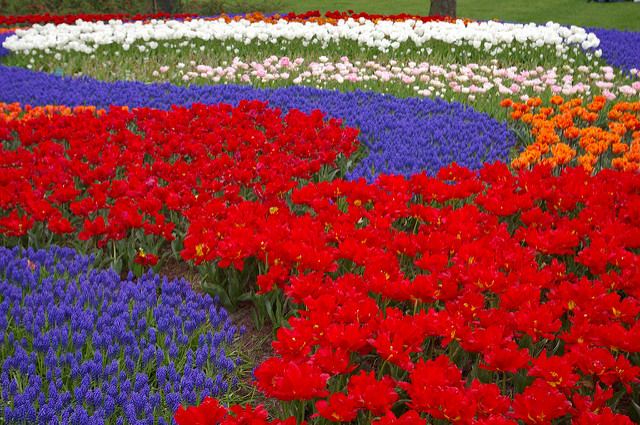
Here’s what a massive fall planting could look like in spring! Photo from the Netherlands by debs-eye/Flickr.
- Plant bulbs….lots of bulbs.
Most bulbs should be planted 4-6 weeks before a hard freeze. (Look up the dates for your ZIP code.) Plant bulbs pointy side up. The rule of thumb for planting depth is to 2-3 times the size of the bulb. - Water as needed.
Dry soil + freezing weather = winter plant damage. Avoid winter burn by getting your plants (especially evergreens) well-hydrated with a deep watering before the ground freezes.
Soil
- Start a fall compost bin.
October is a fantastic month to start a compost bin. Begin with debris from the summer garden and fall leaves.
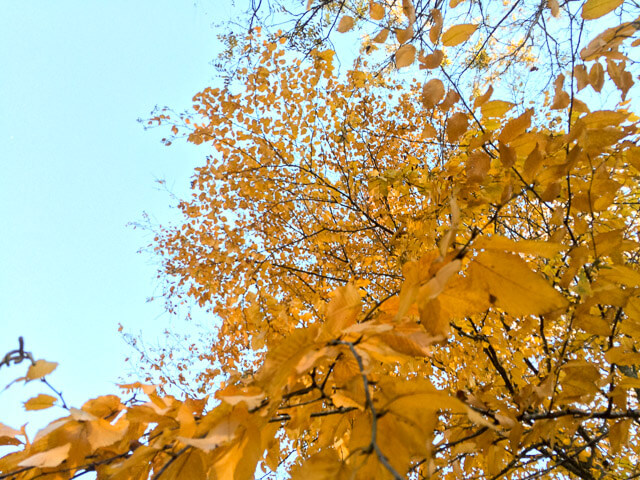
- Stockpile leaves.
You can save them for future compost bins, mulch, or leaf mold. Here’s a fun video about using leaves in your garden:
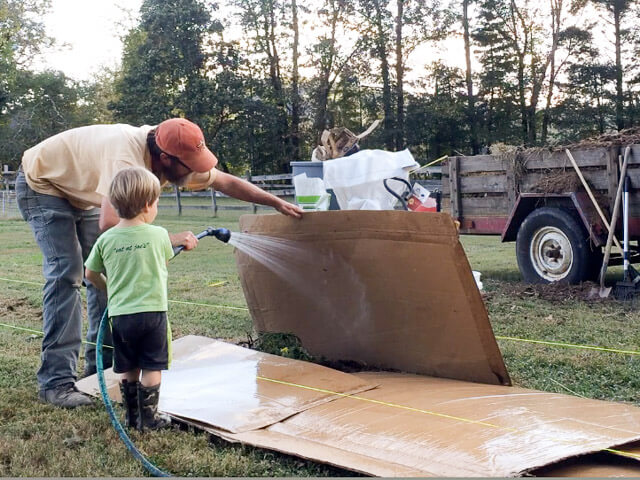
Watering down cardboard for one of the first layers of our sheet mulch.
- Sheet mulch.
Create a sheet mulch bed this fall with thick layers of organic material, like grass clippings, manure and leaves. You’ll have an awesome new planting area in spring. - Test your soil.
Get a snapshot of your soil’s nutrient levels with a soil test, so you can plan for amendments next season. Check with your local cooperative extension service about free or low-cost soil tests.
Gear
- Clean and repair your garden tools before putting them away for winter.
Take time now in fall to get your tools clean and sharp. Repair the ones that need it. You’ll be glad your tools are in good shape come spring when you’re anxious to get into garden. - Extend your season.
Do you have a cold frame? If not, you could make a simple one using haybales and a discarded glass window or door. Or protect a larger area with a simple mini-greenhouse, also known as a low tunnel. You can create an inexpensive low-tunnel using pipes, row cover, and plastic sheeting.
Wildlife
- Clean out bird houses.
When birds have finished using nest boxes, clean them out to prepare for next year’s breeding season. Sialis.com shares tips for cleaning bluebird houses. - Feed the last few hummers.
Will your feeder tempt hummingbirds to stick around instead of migrating? Nope! Shorter days are the main trigger for the birds to fly south. You can leave your feeder out for any stragglers. (Just be sure to keep it clean and mold-free.)
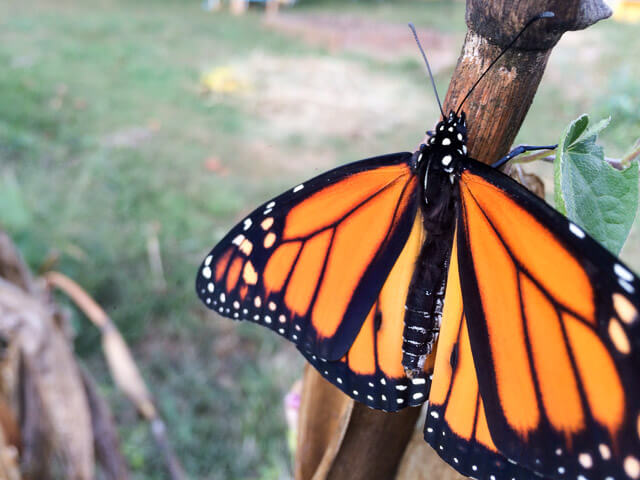
- Watch for monarchs.
The monarch butterflies are headed to Mexico! Depending on where you live, you may be able to spot the migrants passing through. Journey North has a neat animated map where you can explore the monarchs’ path. - Roll out a wildflower welcome.
Are there unmowed areas in your yard where you could grow wildflowers? Make seed balls using native seeds. Toss them out and you’ll have flowers to feed pollinators next season. - Don’t clean up too much.
Many animals overwinter in leaves and brush. Create habitat for wildlife by leaving some wilder, untidy areas in your yard where they can find shelter.
Kids
- Re-boot.
Does everyone in your family have a good pair of waterproof boots? If not, put them on your shopping list. Keeping boots for each child and adult by the backdoor makes it easy for us get outside and into the garden more quickly and more often. - Pop corn on the cob.
This time of year, you can often find ears of dried popcorn at the farmers’ market and grocery store. It’s fun to pop it right on the cob in a paper bag in the microwave. - Make a jack-o-lantern!
Of course, we need carving pumpkins on the list for October. 🙂 The Maniac Pumpkin Carvers use pottery tools to sculpt their pumpkins. Kids could use many of the same tools without worry of cutting fingers. One pro tip they share in the video below: Leave the top intact and cut a hole in the back of your pumpkin for a longer lasting lantern.
- Roast pumpkin and squash seeds.
After you carve your pumpkin or when you’re eating a winter squash, make a crunchy snacks using a simple method that kids can do, too.- Pull the seeds from the pulp. (It’s fine to have a little slimy fiber left.)
- Rinse them in a strainer and shake or pat to dry.
- Coat the seeds with olive or coconut oil and spread them on a baking sheet.
- Sprinkle on salt and other spices you like.
- Roast at 325 degrees for 20-30 minutes, or until golden brown. Smaller seeds (like acorn squash) will cook faster.
- Stir the seeds once or twice to help them roast evenly.
- Allow to cool, then store in an air-tight container.
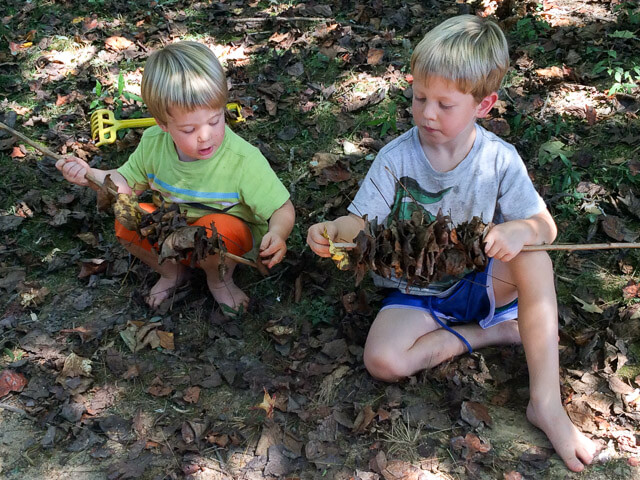
The boys were engrossed in this leaf-spearing game they created. I <3 child-directed play!
- Play in the leaves!
When your kids help rake leaves, be sure to take time for a leaf pile jumping.
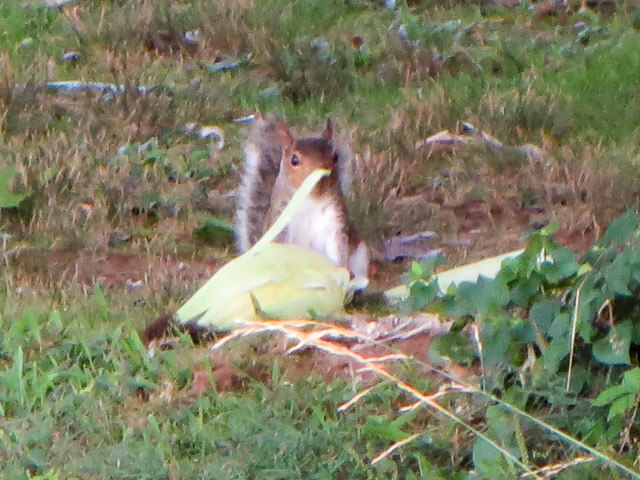
Can you see the blurry squirrel? We watched him carry a whole ear of corn up a tree!
- Go squirrel watching.
My boys crack up when they watch the antics of squirrels. If you don’t have squirrels in your yard, you may find them at a local park or forest.
Beyond
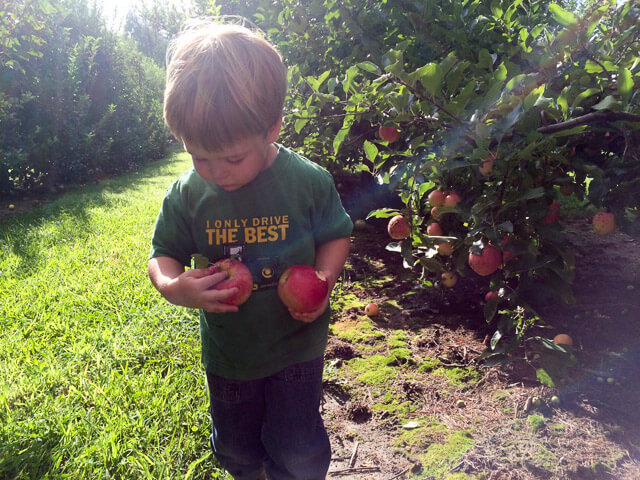
- Pick fall fruit.
Visit a local orchard and pick apples and other fall fruit. With a little research, you may be able to find more unusual fruits like paw-paws and persimmons. Take note of any varieties you want to plant in your own yard. - Visit a public garden.
I love to go to our local botanic garden at least once a season for a beautiful walk and inspiration for my own garden. This time of year, I’m taking pictures of great fall color and late-blooming flowers. (And I’m jotting down plant names, too!) Have you been to a public garden this fall?

We’ll be ready for glove-and-hat weather when it arrives. 🙂
We’d love to hear from you…
What do you hope to do before frost arrives in your garden? Do you have other garden chores you like to do in fall? Do you have fall traditions around your garden and nature?
Tell us in the comments below!
